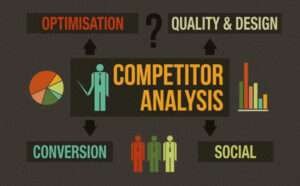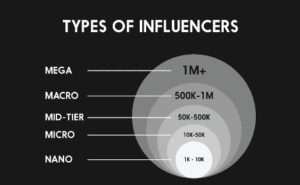
In the realm of web development, JavaScript and PHP are two of the most pivotal technologies. They serve distinct yet complementary functions, each crucial for creating dynamic, efficient, and engaging web applications. This comprehensive overview explores the characteristics, use cases, and interplay between JavaScript and PHP, providing a deeper understanding of how these languages contribute to modern web development.
JavaScript: The Client-Side Powerhouse
javaScript is a versatile scripting language that predominantly operates on the client side, meaning it runs within the user’s web browser. This client-side execution is fundamental to the interactive and dynamic nature of modern web applications.
1. Client-Side Execution
JavaScript’s primary role is client-side scripting, which involves executing code in the user’s browser rather than on the server. When a user accesses a web page, the server delivers HTML, CSS, and JavaScript files to the browser. The browser then interprets and executes the JavaScript code to render interactive features and dynamic content. This approach reduces server load, as the browser handles tasks such as rendering animations, form validations, and dynamic content updates directly. Consequently, users experience faster response times and smoother interactions, contributing to a more responsive web experience.
2. Enhancing Interactivity
JavaScript is integral to creating interactive web elements. It enables developers to build functionalities that respond to user actions without requiring page reloads. For example, JavaScript can validate form inputs in real-time, ensuring that data entered by users is accurate before submission. This prevents errors and reduces the need for server-side processing. Additionally, JavaScript facilitates animations and transitions, such as fading effects or sliding panels, which enhance visual appeal and user engagement. With JavaScript, developers can create complex interfaces and user experiences that are both intuitive and engaging.
3. Document Object Model (DOM) Manipulation
A core feature of JavaScript is its ability to manipulate the Document Object Model (DOM). The DOM represents the structure of a web page as a hierarchical tree of objects, including elements such as headings, paragraphs, and links. JavaScript allows developers to interact with and modify these objects dynamically. For instance, JavaScript can update the content of an HTML element, change the style of a page in response to user actions, or add new elements to the DOM on-the-fly. This dynamic manipulation is crucial for developing modern web applications that adapt in real-time to user interactions.
4. Event Handling
Event handling is another critical aspect of JavaScript. It involves responding to user-generated events, such as clicks, key presses, or mouse movements. JavaScript utilizes event listeners to execute functions in response to these events. For example, a JavaScript function can be triggered when a user clicks a button, causing a modal to appear or an animation to start. This capability is essential for creating interactive features like dropdown menus, interactive maps, and real-time updates. Effective event handling enhances the user experience by providing immediate feedback and creating a more engaging interface.
5. Front-End Development
JavaScript is indispensable for front-end development, where it works in conjunction with HTML and CSS to create user interfaces. Modern JavaScript frameworks and libraries, such as React, Angular, and Vue.js, extend JavaScript’s capabilities, enabling developers to build scalable and maintainable web applications. These tools provide structured approaches to managing user interfaces, handling state, and creating reusable components. By leveraging these frameworks, developers can build complex applications with efficient codebases and enhanced performance.
PHP: The Server-Side Workhorse
PHP (Hypertext Preprocessor) is a server-side scripting language that excels in handling server-side operations and dynamic content generation. Unlike JavaScript, PHP operates on the server, processing code before sending the final HTML output to the client’s browser.
1. Server-Side Execution
PHP code is executed on the web server, meaning that PHP scripts process data and perform tasks before generating the HTML that is sent to the user’s browser. This server-side execution allows PHP to handle complex operations such as interacting with databases, processing form data, and generating dynamic content based on user input or other conditions. For example, when a user submits a form, PHP can validate and store the data in a database, then generate a customized response or redirect the user based on the input.
2. Data Handling and Processing
PHP is highly effective at managing data and performing server-side processing. It can handle various tasks such as processing form submissions, interacting with databases, and managing file uploads. For instance, PHP can retrieve user data from a MySQL database, process it, and generate dynamic web pages based on the retrieved information. PHP’s ability to interact with different database systems, including MySQL, PostgreSQL, and SQLite, makes it a versatile choice for managing data in web applications.
3. Dynamic Content Generation
PHP’s core strength lies in its ability to generate dynamic content. PHP scripts can produce different outputs based on user interactions or data retrieved from databases. This dynamic content generation is essential for creating personalized web experiences, such as displaying user-specific information, generating custom reports, or rendering templates that adapt to various conditions. For example, PHP can generate a personalized greeting for a logged-in user based on their profile information stored in a database.
4. Back-End Development
PHP is a popular choice for back-end development due to its robust server-side capabilities. It manages server-side logic, data processing, and integration with databases, which are crucial for building dynamic web applications. PHP frameworks, such as Laravel, Symfony, and CodeIgniter, offer extensive tools and features for back-end development, including routing, authentication, and database management. These frameworks streamline the development process, enhance security, and promote best practices in coding.
5. Integration with Web Servers
PHP integrates seamlessly with web servers like Apache and Nginx. It is embedded within HTML files using PHP tags, which the server processes before delivering the final HTML output to the client. This integration allows developers to combine PHP with HTML, CSS, and JavaScript to create full-featured web applications. For example, PHP can be used to generate HTML content dynamically, which can then be styled with CSS and enhanced with JavaScript functionality.
JavaScript and PHP: Complementary Roles
JavaScript and PHP, while serving distinct functions, often work together to create comprehensive web applications. Their complementary roles enhance both client-side and server-side functionality, resulting in robust and dynamic web solutions.
1. Combined Usage
JavaScript and PHP frequently collaborate to deliver a cohesive user experience. PHP handles server-side processing and data management, while JavaScript enhances the client-side experience with interactive features and real-time updates. For example, a PHP script might process a form submission and store data in a database, while JavaScript provides real-time validation and feedback before the form is submitted. This combined approach ensures a smooth and efficient user experience.
2. Asynchronous Communication
JavaScript’s AJAX (Asynchronous JavaScript and XML) technology enables asynchronous communication between the client and server. AJAX allows JavaScript to send requests to a PHP script on the server without requiring a full page reload. This capability is commonly used for tasks such as loading new data, submitting forms, or updating content dynamically. For example, an AJAX request can retrieve new content from a PHP script and update a section of the page without refreshing the entire web page, creating a more seamless and responsive user experience.
3. Frameworks and Libraries
Both JavaScript and PHP benefit from a rich ecosystem of frameworks and libraries that enhance their capabilities. JavaScript frameworks, such as React, Angular, and Vue.js, provide tools for building complex front-end applications with reusable components and efficient state management. PHP frameworks, such as Laravel, Symfony, and CodeIgniter, offer robust solutions for back-end development, including features for routing, authentication, and database management. These frameworks and libraries streamline development, improve code quality, and accelerate project timelines.
4. Security Considerations
Security is a critical aspect of web development, and both JavaScript and PHP have unique considerations. JavaScript code running in the client’s browser is exposed to potential vulnerabilities, such as cross-site scripting (XSS) attacks. Developers must implement proper validation and sanitization to protect against these threats. On the server side, PHP must be safeguarded against issues like SQL injection and session hijacking. Best practices include using prepared statements for database queries, validating and sanitizing user input, and implementing secure authentication mechanisms.
5. Performance and Scalability
Performance and scalability are crucial factors in web development. JavaScript’s ability to run client-side reduces server load and can enhance performance by offloading tasks to the user’s browser. This approach is beneficial for creating responsive interfaces and reducing server resource consumption. PHP’s server-side processing is essential for handling complex logic and managing large-scale data interactions. Optimizing both client-side and server-side performance is critical for building scalable web applications that can handle increasing user traffic and data demands.
Conclusion
JavaScript and PHP are both integral to modern web development, each serving a distinct but complementary role. JavaScript excels in client-side scripting, enabling interactive features, dynamic content updates, and seamless user experiences. PHP, on the other hand, specializes in server-side processing, data handling, and dynamic content generation, making it a cornerstone of back-end development.
By leveraging the strengths of both JavaScript and PHP, developers can create robust, dynamic, and user-friendly web applications. Their combined usage enables the development of comprehensive solutions that provide seamless interactions, efficient data management, and a high-quality user experience. Understanding how JavaScript and PHP work together empowers developers to build powerful web applications that meet the needs of today’s users and stand out in a competitive digital landscape.

















































